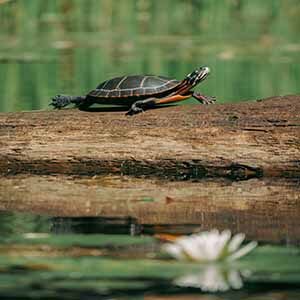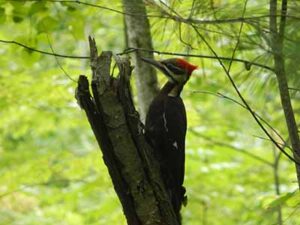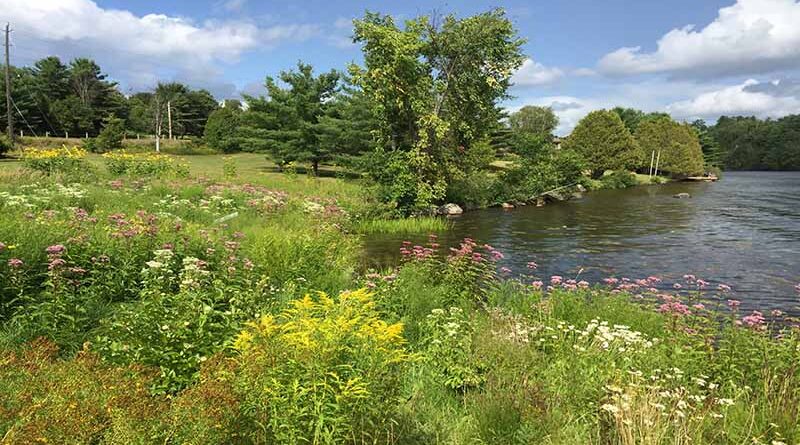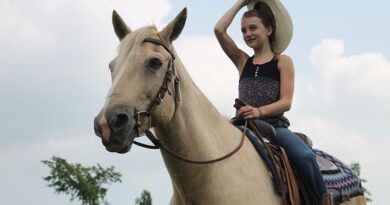The Importance of Leaving Natural Habitat Features
Leaving natural habitat features is a sure-fire way to improve the health of your shoreline and lake as well as help the wildlife that call it home!
Creating a safe habitat for wildlife will inspire many enjoyable activities for you and your family, from bird watching to wildlife photography to species spotting. You’ll have a thriving ecosystem right there you can all enjoy together. Check out these five habitat features and how they contribute to the health of your shoreline property!
Littoral Coarse Wood – this includes fallen trees, logs and large branches that are partially or fully in the water. It helps reduce erosion, provides insects with resting sites and offers fish and amphibians protective cover and shade. Some fish species use these wood features for spawning and nest protection. You can help bring this important feature back to your lake by keeping any shoreline vegetation that you currently have and by planting native trees and shrubs along your shoreline to help jumpstart the process.
 Overhanging Vegetation – shades and cools the water and provides important habitat for wildlife, including fish, amphibians, and reptiles. Fish and frogs often feed and spawn below overhanging vegetation and the leaves, twigs, fruit, flowers and even insects found on overhanging vegetation provide an important food source for many species. Consider planting some native trees and shrubs along your shoreline, or simply allow native vegetation to re-establish on its own. As the plants begin to grow, they will provide shade and cover for species that feed, breed, and rear young in and around water.
Overhanging Vegetation – shades and cools the water and provides important habitat for wildlife, including fish, amphibians, and reptiles. Fish and frogs often feed and spawn below overhanging vegetation and the leaves, twigs, fruit, flowers and even insects found on overhanging vegetation provide an important food source for many species. Consider planting some native trees and shrubs along your shoreline, or simply allow native vegetation to re-establish on its own. As the plants begin to grow, they will provide shade and cover for species that feed, breed, and rear young in and around water.
Aquatic Vegetation – Aquatic plants help maintain water quality and stabilize wave energy to help reduce erosion. The lakebed and plants provide growth surfaces for algae and insects, cover for prey species and protection for young fish. Many species of insects, fish, birds, amphibians, and reptiles depend on the resources provided by the aquatic zone during at least a portion of their lives.
Cavity Trees – are trees with holes in the trunk or branches and are used by many species of birds and mammals for creating nests, raising young, feeding, escaping predators and hibernation. By allowing cavity trees to remain on your property, when safe, you can maintain this important habitat feature for wildlife. 
Dead Standing Trees – are teeming with life! To many birds and mammals, these trees are a vital source of food and shelter. If there are dead standing trees on your property let them be unless there is a safety concern!
If features do need to be removed, remember that a permit or approval may be required. Ultimately, a natural shoreline rich with native habitat will help attract wildlife and give you more reasons to love your lake!
For more information on how you can show your lake some love, visit LoveYourLake.ca. Love Your Lake is a shoreline naturalization program developed by the Canadian Wildlife Federation and Watersheds Canada.




